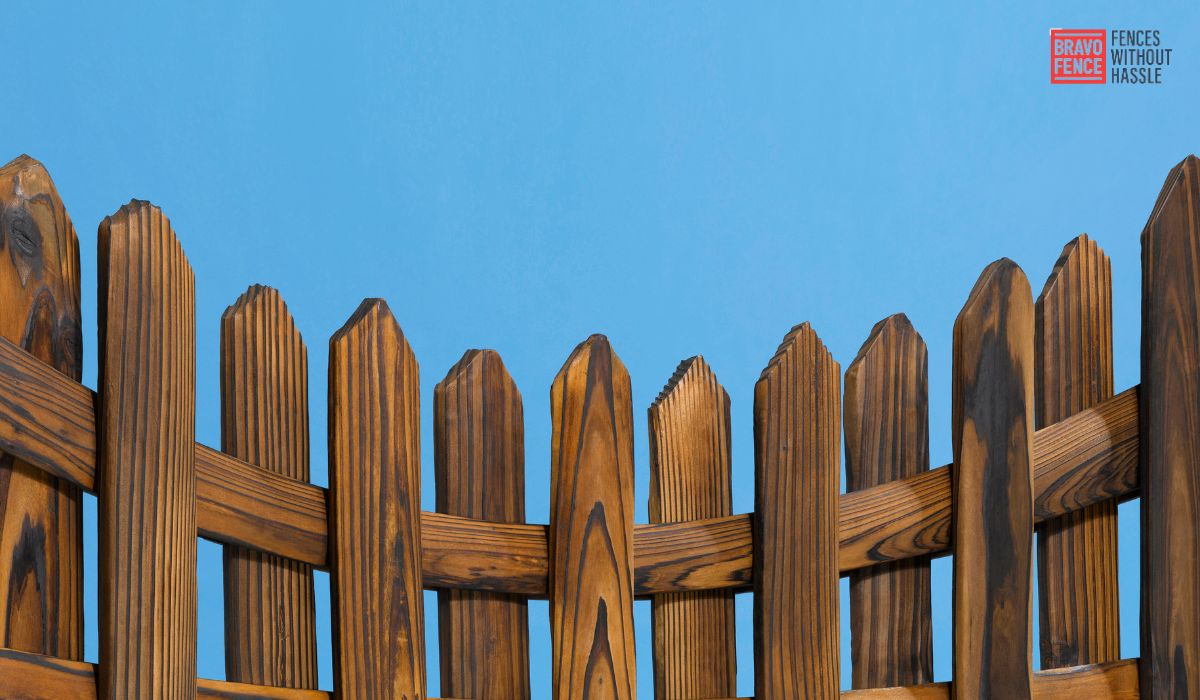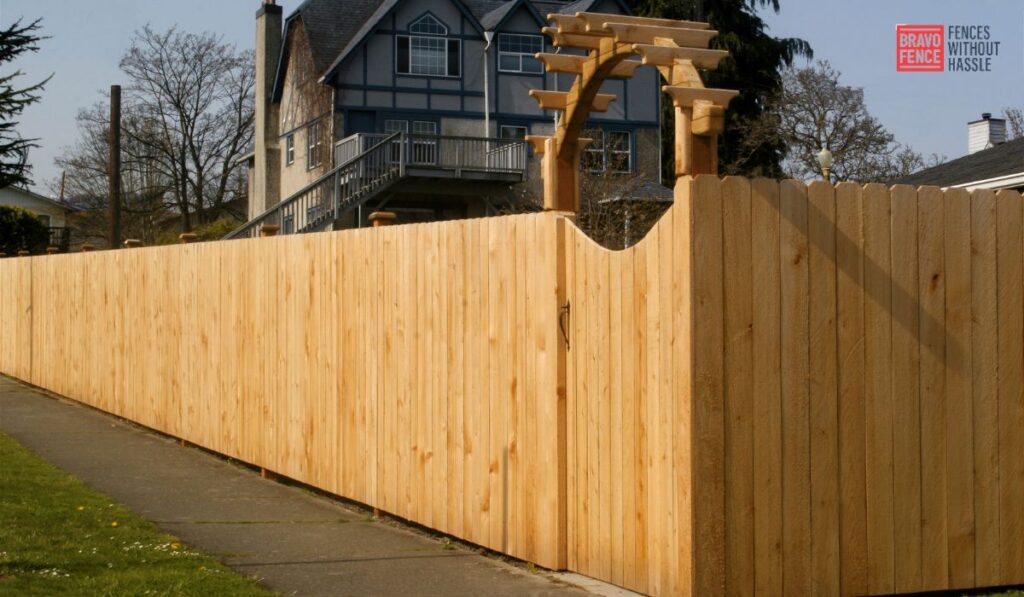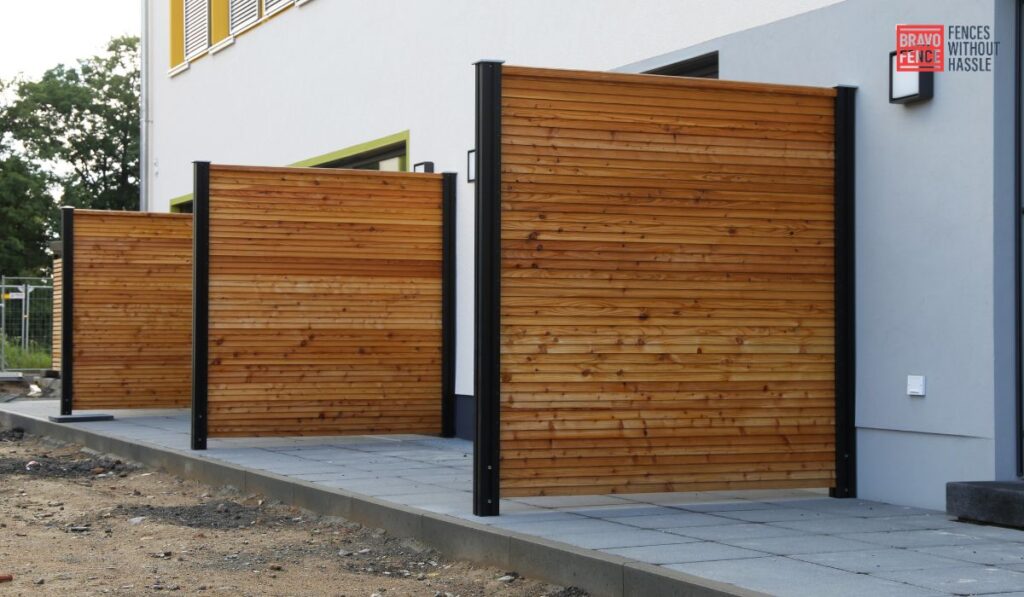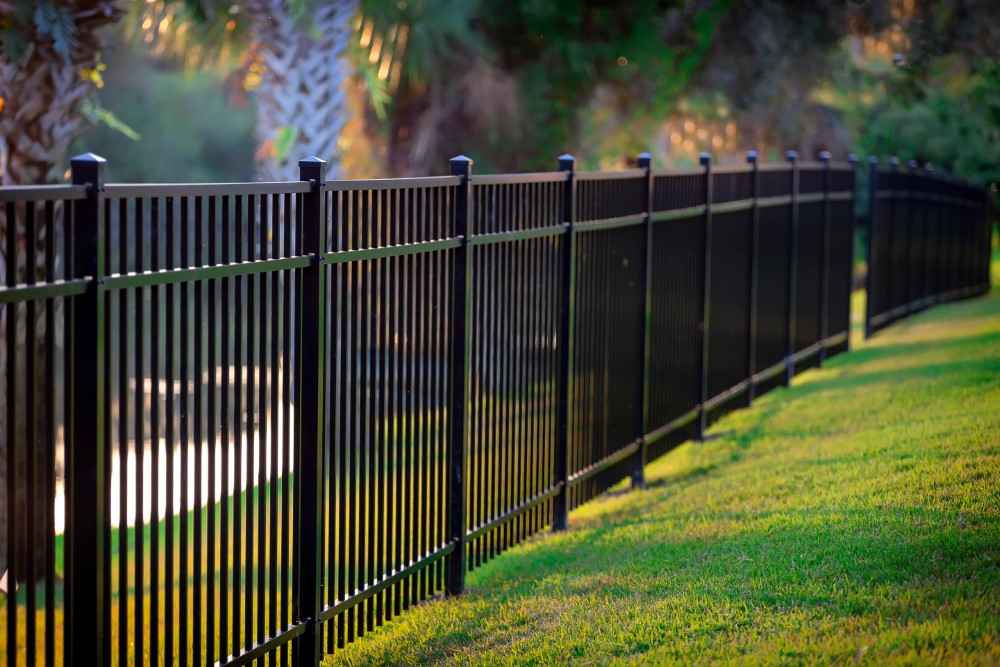
How to Install a Privacy Screen on a Wood Fence
Installing a privacy screen on a wood fence is an easy way to make your yard more private and secure. Not only will it keep prying eyes out, but it can also help deter criminals from targeting your home.
In this blog post, we will walk you through the steps of installing a privacy screen on a wood fence. So, whether you are looking to add some privacy to your backyard or want to increase the security of your property, read on for instructions on how to do it yourself!
Benefits of Adding a Privacy Screen on a Wood Fence
There are many benefits to adding a privacy screen to your wood fence. In addition to privacy and security, it can also:
-Reduce noise pollution
-Block out unwanted views
-Increase the value of your home
-Make your outdoor space more enjoyable
Choosing the Right Privacy Screen
The first step is to choose the right privacy screen for your needs. There are many different types of privacy screens on the market, so it’s important to select one that will work well with your wood fence.
For example, if you have a chain-link fence, you’ll need a different type of privacy screen than if you have a solid wood fence. The most popular materials for privacy screens are bamboo, reeds, and willow. However, you can also use lattice panels, slats, or even privacy netting.
When choosing a material for your privacy screen, keep in mind the following:
-How much privacy do you need?
-What is the purpose of the privacy screen?
-Do you want it to be permanent or temporary?
-What is your budget?
Bamboo Privacy Screen
Bamboo is one of the best materials to use for a privacy screen because it is strong, durable, and thick. It can also grow up to 12 feet tall, which makes it an excellent choice if you need complete privacy. Bamboo privacy screens are also relatively inexpensive and easy to install.
Reed Privacy Screen
Reeds are another popular choice for privacy screens because they are lightweight, flexible, and easy to work with. They can be woven into a variety of shapes and sizes, which makes them perfect for custom privacy screens. Reed privacy screens are also one of the more affordable options on the market.
Willow Privacy Screen
Willow privacy screens are a great choice if you’re looking for something that is both aesthetically pleasing and functional. In fact, willow is a beautiful wood that can be stained or painted to match your existing fence. It is also a very strong material that will provide you with years of privacy.

Lattice Privacy Screen
Lattice privacy screens are a good choice if you need privacy but also want to add some decoration to your fence. The pre-fab lattice panels come in a variety of materials, including wood, plastic, and metal. They can also be painted or stained to match your fence.
Slat Privacy Screen
Slat privacy screens are similar to lattice privacy screens but are made with individual slats instead of panels. The actual slats can be made from a variety of materials, including wood, plastic, and metal. They are also available in a variety of colors and can be stained or painted to match your fence.
Privacy Netting
Privacy netting is a good choice if you need complete privacy but don’t want to block out all the light. It is also a good choice if you have a chain-link fence. Privacy netting is available in a variety of colors and can be easily installed with zip ties or screws.
Getting Ready to Install a Privacy Screen on a Wood Fence
Keep in mind that while these instructions are specifically for wood fences, the same principles can be applied to other types of fences as well.
Tools and Materials Needed
Before you get started on this project, there are a few tools and materials that you will need. These include:
– privacy screen
– wood fence panels
– screws
– drill/driver
– tape measure
– pencil
– saw (if needed)
– level (optional)
Measuring and Cutting the Panels
The next step is to measure and cut the privacy screen panels to fit your fence. If you’re using privacy screening that comes in rolls, you’ll need to unroll it and cut it to size with a saw.
Once you have all of your panels cut, it’s time to move on to the next step!
Attaching the Privacy Screen on a Wood Fence
Now that you have your privacy screen panels cut to size, it’s time to attach them to your fence. To do this, simply screw the panels into place using screws that are appropriate for your type of fence.
If you’re not sure what type of screws to use, consult a hardware store worker or the privacy screen manufacturer’s instructions. Once all of the panels are in place, you’re finished!
Hire a Pro
If you’ve read through these steps and are feeling overwhelmed, there’s no need to stress. You can always hire a professional fencing company in Atlanta, Georgia to take care of the job! When you hire a professional to add a privacy screen on a wood fence, you can rest assured that it will be done correctly and to your specifications.
Plus, you won’t have to worry about making any mistakes that could damage your fence. So, if you’re not confident in your ability to install a privacy screen on a wood fence yourself, hire a pro!
Takeaways on Adding a Privacy Screen on a Wood Fence
Installing a privacy screen on a wood fence is a great way to improve the look and feel of your property. Not only will it provide privacy for you and your family, but it can also add some extra security. Enjoy your new privacy screen and the increased privacy and security it will provide for your home.
FAQs
Q1: What is a privacy screen for a wood fence?
A privacy screen for a wood fence is a panel or structure made from various materials such as wood, vinyl, or metal installed on top of or between the fence slats. Its primary purpose is to enhance privacy by blocking the view from outside while still allowing airflow and natural light to pass through.
Q2: Why would I want to install a privacy screen on my wood fence?
Installing a privacy screen on your wood fence offers several advantages. First, it provides enhanced privacy, shielding your outdoor activities from prying eyes. Additionally, it can reduce noise, create a cozy and secluded ambiance, and add a touch of elegance to your property.
Q3: What materials do I need to install a privacy screen on a wood fence?
The materials required for installing a privacy screen on a wood fence depend on your preference and design. Common materials include:
- Privacy screen panels.
- Screws or nails.
- Hinges (if applicable).
- Any additional decorative elements or paint for customization.
Q4: How do I measure and choose the right privacy screen for my fence?
To measure and choose the right privacy screen for your fence:
- Start by measuring the length & height of the fence section where you want to install the screen.
- Consider the width of the privacy screen panels and ensure they align with your fence structure.
- Choose a design & material that complements your existing fence and meets your desired level of privacy.

Q5: What tools do I need to install a privacy screen on a wood fence?
The tools required for installing a privacy screen on a wood fence typically include a measuring tape, a level, a power drill or screwdriver, screws or nails, a saw (if customization is needed), and a paintbrush (if painting the screen).
Q6: How do I prepare my wood fence for the installation of a privacy screen?
Before installing a privacy screen, it’s essential to ensure your wood fence is in good condition:
- Please inspect for loose or damaged slats and repair or replace them.
- Clean the fence surface and remove any debris or dirt.
- Apply fresh paint or stain to the fence for a uniform and appealing look.
Q7: What are the different installation methods for privacy screens on wood fences?
The installation methods for privacy screens on wood fences vary depending on the design and structure of the screen. Standard methods include attaching the screen panels directly to the fence slats using screws or nails, installing the screen panels between fence posts, or using hinges to create a folding privacy screen.
Q8: Can I install a privacy screen on an existing wood fence?
Yes, you can install a privacy screen on an existing wood fence. First, ensure that the wall is sturdy enough to support the additional weight of the privacy screen. Next, choose a design that aligns with your fence structure, and follow the appropriate installation method based on the screen’s design.
Q9: How do I secure the privacy screen to the wood fence?
To secure a privacy screen to a wood fence, use screws or nails to attach the screen panels firmly to the fence slats or posts. Ensure the fasteners are appropriately spaced and tightened to provide stability and durability.
Q10: How do I maintain and clean a privacy screen on a wood fence?
Maintaining and cleaning a privacy screen on a wood fence is relatively simple. Regularly inspect the net for damaged or lost components and repair or replace them promptly. To clean the screen, use a mild soap solution and a soft brush or cloth to remove dirt or stains. Rinse thoroughly with water & allow it to air dry.
Q11: Are there any regulations or restrictions for installing privacy screens on wood fences?
Regulations and restrictions for installing privacy screens on wood fences may vary depending on your location and local building codes. Before installation, check with your homeowner’s association or local authorities to ensure height, material, or design restrictions compliance.
Q12: Can I customize or paint the privacy screen to match my aesthetic preferences?
You can customize or paint the privacy screen to match your aesthetic preferences. Many privacy screens are available in different colors & designs, allowing you to pick one that complements your outdoor decor. In addition, you can paint the screen to achieve a specific look or match it with your existing fence if desired.
Q13: How long does installing a privacy screen on a wood fence take?
The time required to install a privacy screen on a wood fence depends on various factors, such as the fence section’s size, the design’s complexity, and your level of experience. On average, it can take a few hours to a day for a DIY installation, but allocating sufficient time for careful measurement and proper installation is recommended.
Conclusion
In conclusion, adding a privacy screen to your wood fence offers an easy way to increase privacy and security in your yard. It reduces noise, blocks unwanted views, and adds value to your home. Choose suitable screen material, such as bamboo, reeds, willow, lattice panels, slats, or privacy netting, based on your needs. Install the screen by measuring, cutting, and attaching the panels securely. If you prefer professional assistance, hire a fencing company. Enjoy the improved aesthetics and enhanced privacy and security that a privacy screen brings to your home.
Tags: Complete Guide to Privacy Screen Maintenance, Complete Guide to Privacy Screen Selection, Everything You Need to Know About Privacy Screen Customization, Explore Helpful Resources on Privacy Screen Attachment, Explore Helpful Resources on Privacy Screen Regulations, Inspiration and Tips on Privacy Screen Dimensions, Inspiration and Tips on Privacy Screen Installation, Inspiration and Tips on Privacy Screen Materials, Top Ideas and Insights About Privacy Screen Aesthetics, Top Ideas and Insights About Privacy Screen Durability, Top Ideas and Insights About Wood Fence Privacy Screen
